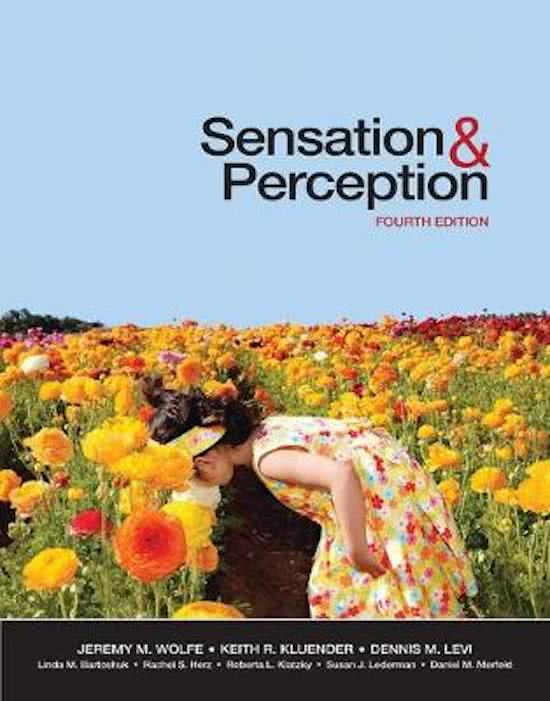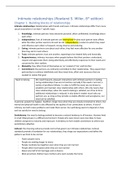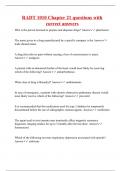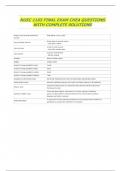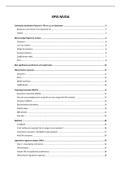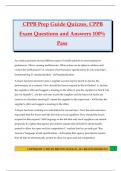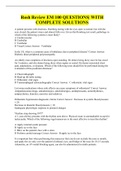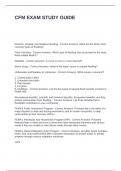Problem 3: Perception and decision making
Literature: Wolfe, Goldstein
Methods to study senses
1. Thresholds
- Gustav Fechner (1801-1887): true founder of experimental psychology
o Wishes to explain relation between mind (psycho-) and body (physics)
o Fechner´s law: proportional increase of subjective sensation to the logarithm of stimulus Intensity
= as stimulus intensifies, bigger changes are required to detect a difference
o Absolute threshold = the minimum intensity of a stimulus that is needed to be detected
- Ernst Weber (1795-1878): interested in touch
o Tested accuracy of sense of touch (smallest distance between 2 points that we don’t feel as one)
= two-point touch threshold
o also judgement of lifted weights (compare weight to standard weight)
small difference easily detected when standard was light
heavier weight need greater difference
→ JND (Just Noticeable Difference) or difference threshold
o JND change in systematic way:
Smallest detectable weight change is 1/40th of standard weight
“Weber fractions”
Smallest detectable length of line change 1/100
→ found constant ra o for every measure (brightness, tone/pitch, me)
→ excep ons: when measure is extreme (small/large)
o Fechner named mathematical formula/ general rule: K=∆ /
- Psychophysical methods: measurement of absolute threshold
o Method of constant stimuli
Stimuli of different intensities are presented → par cipant replies
“yes”/ “no” or “same/different”
Stimuli of same intensity presented multiple times (important bc
thresholds vary); random order
Stimuli needs to be perceived 50% of the time→ fluctua ons of the
nervous system → some mes threshold is detected, other mes
not.
E.g. hearing test
() inefficient if many stimuli below/above the threshold are presented (waste of time)
(+) simple
o Method of limits
Set of tones are presented in increasing/decreasing order → listener reports when he first hears the
tone
Average of crossover points → threshold
o Method of adjustment
Same as method of limits, but this time participant adjusts intensity of the stimulus
2. Scaling
- Discover magnitude of subjective perception (“Make the other light 2x as light as this one.”)
o Magnitude estimation: participants rate experience by their own (or given) scale
o Steven´s power law = describes relation between stimulus and subjective sensation. States the sensation is
proportional to the stimulus magnitude raised to an exponent
S = ab
Exponent ˂ 1: sensation grows slower than stimulus
E.g. sensation of electric shock has exponent of 3.5 (4x increase feels 128x more painful)
o Cross modality matching: participant matches perceived magnitude of stimuli to a different type
E.g. loudness of tone to brightness of light → similari es of variance
Different when it comes to taste: PROP (molecule that some humans have and others don’t)


